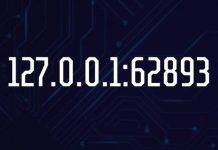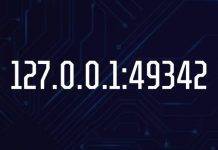Reimbursement is one of the big issues for the health provider as they can overpay or underpay. It becomes crucial to ensure the accuracy and integrity of data so healthcare providers furnish accurate reimbursement to the patients. Risk adjustment data validation (RADV) comes into the picture to ensure the accuracy and integrity of the diagnosis data submitted by healthcare providers. It is a process used by government health programs, such as Medicare Advantage.

RADV aims to identify any discrepancies in the reported diagnoses and verify that they are supported by proper documentation. Verifying patients’ medical records is crucial for reimbursement, so CMS (Centers for Medicare & Medicaid Services) verifies the diagnosis codes tied to the HCC (hierarchical condition categories). During the data validation, the records verification is done with the help of a medical chart review, which is stored in an EHR(electronic health record).
What Are the RADV Objectives?
● Accurate Payment
RADV ensures that healthcare providers furnish accurate reimbursement based on the health status and needs of the patients. It conducts a medical chart review, validates the reported diagnoses, and fixes the possible discrepancies in the data. It saves healthcare providers from underpayment or overpayment.
● Quality Assurance
RADV serves as a quality control mechanism to assess the accuracy and completeness of diagnosis data. It identifies coding errors, documentation deficiencies, and potential fraud and assures quality. This process raises the integrity of the reimbursement process and ensures government funds are appropriately used.
● Data Integrity
Maintaining the integrity of the diagnosis data submitted for reimbursement is crucial. RADV conducts audits and verifies documentation, and it ensures that proper clinical evidence supports the reported diagnoses and meets the required coding guidelines and standards.
● Compliance Monitoring
RADV ensures healthcare providers meet the requirements of coding and documentation guidelines. It helps identify areas where providers may need additional support to improve their coding practices and ensure accurate reporting of diagnoses.
● Program Oversight
RADV provides valuable feedback and insights to government health programs regarding the accuracy and quality of diagnosis data submitted by healthcare providers. This information helps identify trends, address program vulnerabilities, and develop targeted interventions to improve data accuracy and integrity.
How Does RADV Work?
- Healthcare providers submit the data for medical chart review, and a sample of patient records is randomly chosen. These records represent a subset of the entire people enrolled in the program.
- The healthcare people get the notification to submit the relevant medical records of the chosen patients. The records must contain the necessary documentation supporting the reported diagnoses.
- Trained auditors conduct the medical chart review to verify the accuracy of the reported diagnoses. Generally, government or third-party contractors hire them, and auditors ensure the documentation meets the required standards and diagnoses are appropriately supported.
- Adjustments might be made to the provider’s reimbursement rates if errors or discrepancies are identified during the audit. These adjustments ensure fair and accurate payment according to the patient’s health status.
- Providers can appeal adverse findings and provide additional documentation supporting their reported diagnoses. The appeals process allows further review to resolve the disagreements between the healthcare provider and the auditors.
What is the Importance of Medical Chart Review In RADV?
● Ensuring Accuracy of Risk Adjustment
Medical chart review helps in verifying the accuracy of reported diagnoses. Reviewers thoroughly examine the clinical documentation in the medical charts, and it validates the documented diagnoses and ensures they align with the patient’s clinical evidence. Accurate risk adjustment of reports diagnosis relies on patients’ precision, as they directly impact the severity and complexity of patient conditions.
● Compliance with Coding Guidelines
The documented diagnoses must meet the specific criteria set forth by coding guidelines. Compliance with these guidelines is crucial to avoiding penalties and appropriate reimbursement. Medical charts help to ensure compliance with coding guidelines and standards, such as the ICD (International Classification of Diseases) coding system.
● Identification of Documentation Gaps
The gap in documentation might decrease the quality of the patient’s care. Reviewing medical charts thoroughly can help reviewers identify documentation gaps, such as missing, incomplete, or insufficiently documented diagnosis. Once the gap is identified, healthcare can take action to documentation practices. It ensures all relevant diagnoses and clinical details are captured, helping accurate risk adjustment and enhancing the overall quality of patient care.
● Mitigation of Audit Risks
The regulatory body conducts the RADV audits to validate the accuracy and integrity of reported diagnoses. If any issue is found during the audit, healthcare organizations might have to pay penalties and besmirch their name due to non-compliance during the audit process. However, reviewing medical charts will help to identify the potential risk before an audit.
● Quality Improvement Opportunities
Reviewing the medical chart will provide valuable insight that will help organizations to improve the quality of clinical documentation and coding practices. With the help of insight, organizations can identify areas for improvement and implement targeted interventions.
They can take action to provide education & training that will enhance documentation quality, coding accuracy, and overall risk adjustment performance. This ongoing quality improvement process will help the organization in better patient outcomes, optimal reimbursement, and diagnoses are accurately captured.
The Bottom Line!
RADV is a process used in healthcare to ensure accurate reimbursement by validating the reported diagnoses. The reimbursement is allocated on the severity and complexity of patient conditions. It helps organizations comply with the coding guidelines to prevent heavy penalties. During the RADV process, medical charts review ensure reported diagnoses are aligned with the clinical evidence present. It enhances the risk adjustment accuracy.







































